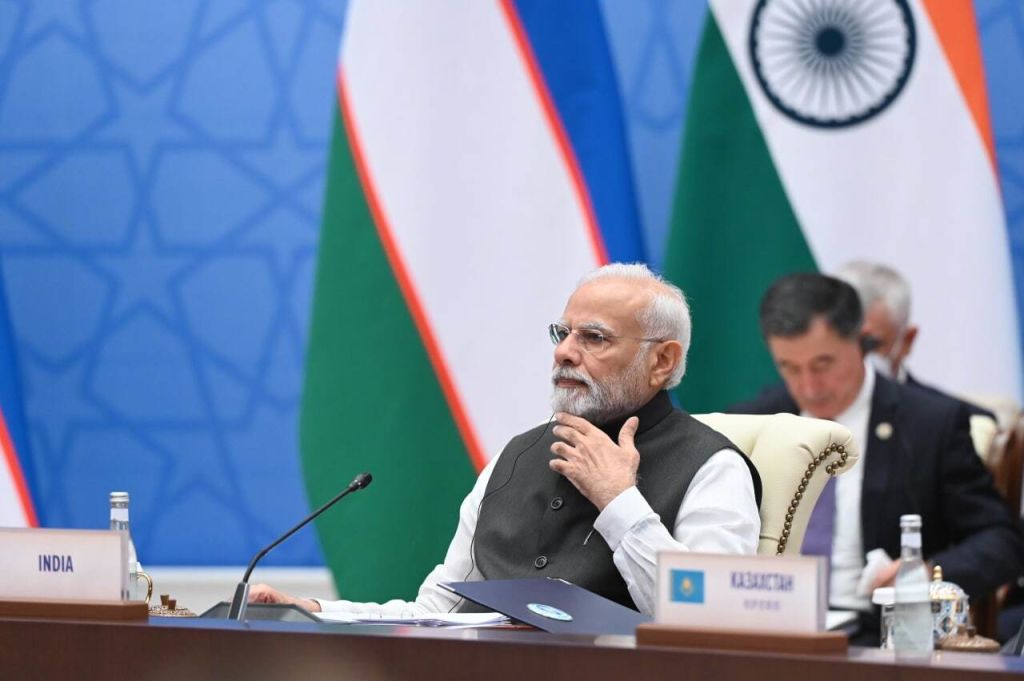While Xi Jinping consolidates his power, apprehension grows in India
Posted By Sarosh Bana on September 19, 2022 @ 14:55

There’s a sense of foreboding in New Delhi as Xi Jinping prepares to secure a third five-year term as China’s president. It’s expected that Xi’s appointment will be confirmed by the 20th congress of the Chinese Communist Party, which begins in Beijing on 16 October.
Under Xi, China has, with relentless pugnacity, challenged India’s sovereignty by encroaching on its territorial waters and redrawing the Line of Actual Control, the 3,488-kilometre Himalayan frontier that divides the nuclear-armed neighbours.
Xi queered the pitch further by rebuffing India’s Prime Minister Narendra Modi, who had been looking forward to a separate meeting with him at last week’s Shanghai Cooperation Organisation summit in Uzbekistan. Xi pointedly did not acknowledge Modi even when the Indian leader walked up to him at the photoshoot of the organisation’s leadership.
Modi has hitherto been unable to raise with Xi the issue of Chinese troops on Indian territory since their violent cross-border clash with Indian soldiers on 5 May 2020. Chinese troops also slew 20 Indian soldiers in the area on 15 June 2020, the first deadly skirmish since 1967, when a border confrontation led to the deaths of 80 Indian and 400 Chinese soldiers. It is widely believed that a direct discussion would have helped defuse the tensions.
This has raised concern about an apparent communication gap between the two leaders. Modi has previously claimed a close rapport with Xi, built up over his nine visits to China, five as prime minister and four previously as chief minister of Gujarat state. He also hosted the Chinese president in India three times between 2014 and 2019.
Moreover, even as corps commander-level talks on disengagement and de-escalation continue between the two countries, Modi has avoided identifying China as the aggressor, asserting instead, ‘No intruder is present inside India’s borders, nor is any post under anyone’s custody.’
India has demonstrably been pushed onto the back foot as more than 50,000 People’s Liberation Army troops continue to occupy 1,000 square kilometres of the eastern sector of India’s border union territory of Ladakh.
While an intransigent China has not heeded India’s call for reinstatement of all the captured territories, it consented to a localised disengagement by Indian and Chinese frontline troops being carried out last week from Patrolling Point 15 in Gogra-Hot Springs, as per the agreement reached at the 16th round of talks in July.
A similar breakthrough had been reached once before, at the 9th round of talks in January 2021, which led to disengagement at the south and north banks of the Pangong Tso lake.
While China yielded some ground, India appears bereft of any comprehensive strategy to deal with the situation. New Delhi’s anxiety about pursuing a negotiated conciliation has been prompted by the vast disparities between their forces. Military retaliation is not an option for India, as it strives to prevent the hostility spiralling into an all-out war it can ill-afford.
Though India has affirmed that only complete disengagement can lead to de-escalation of hostilities, it hailed the limited withdrawals as major concessions it extracted from Beijing. However, it has ceded territory to China by agreeing to the pullbacks from areas well within its borders and to the creation of ‘buffer zones’ inside its territory.
It also remains to be seen how long this disengagement will hold. PLA troops recrossed the LAC following the 2021 disengagement to reoccupy positions on the Kailash Range that they had vacated, and others moved in to points near the Pangong Tso and Galwan river.
A menacing China has opened additional fronts along India’s border states of Arunachal Pradesh, Uttarakhand and Sikkim. Beijing has all along claimed the 83,743square kilometre Arunachal as part of southern Tibet. In 2018 its state-run English-language daily Global Times asserted: ‘Although China recognised India’s annexation of [7,096 square kilometres] Sikkim in 2003, it can readjust its stance on the matter.’
The PLA has also brought in medium-lift helicopters, towed artillery, light tanks, infantry combat vehicles, rocket launchers and drones with thermal imaging, and created extensive support infrastructure with fortifications and encampments, all within striking distance of Indian deployments. It has also laid fibre-optic cables to secure lines of communication between forward troops and bases in the rear.
China’s push against India doesn’t appear merely tactical, but has a strategic intent with long-term objectives. These moves are not directed by exuberant commanders on the ground, but by the topmost leadership, the Central Military Commission, chaired by Xi.
Despite three previous border agreements, Beijing disputes most of its territorial demarcations with India. In 2017, it had a 73-day standoff with India at the India–China–Bhutan tri-junction of Doklam, the most critical in decades.
India has reason to fear a progressive deterioration in its security environment, with the CCP congress expected to cement Xi’s place as the country’s most powerful leader since Mao Zedong. Xi made this possible when in 2018 he rescinded the two-term limit for the presidency. He has served as CCP general secretary and chair of the Central Military Commission since 2012 and has been president since 2013.
Recently in New Delhi, Indian foreign minister S. Jaishankar observed: ‘It is said that the prerequisite for an Asian Century is an India and China coming together.’
Conversely, he said, the inability of these nations to work together will undermine that goal.
Article printed from The Strategist: https://www.aspistrategist.org.au
URL to article: https://www.aspistrategist.org.au/while-xi-jinping-consolidates-his-power-apprehension-grows-in-india/
Click here to print.